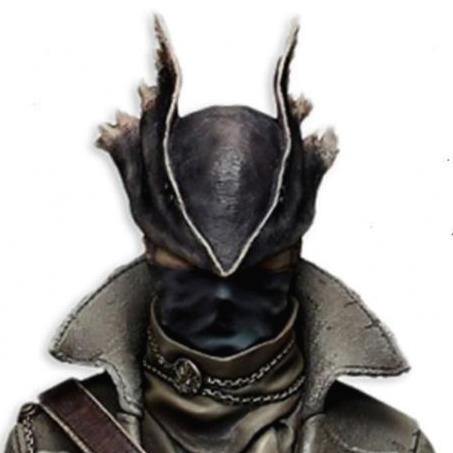| 일 | 월 | 화 | 수 | 목 | 금 | 토 |
|---|---|---|---|---|---|---|
| 1 | 2 | 3 | 4 | 5 | 6 | 7 |
| 8 | 9 | 10 | 11 | 12 | 13 | 14 |
| 15 | 16 | 17 | 18 | 19 | 20 | 21 |
| 22 | 23 | 24 | 25 | 26 | 27 | 28 |
| 29 | 30 |
- 프로그래머
- 게임개발
- V3
- 이터널리턴
- 논문리뷰
- connx
- ctypes
- 리뷰
- modbus-tcp
- trapmessage
- 딜러닝
- MODbus
- 호흡분석
- python
- 설치
- C언어
- 네트워크
- GPT
- 파이썬
- Detectron2
- SNMP
- yolo
- Protocol
- 딥러닝
- 헬스케어
- 언리얼엔진
- 개발자
- 논문
- 챗지피티
- ChatGPT
- Today
- Total
yusukaid's IT note
TensorFlow를 이용한 YOLO v1 논문 구현 #5 - utils.py 본문
이전 글: https://it-the-hunter.tistory.com/32
TensorFlow를 이용한 YOLO v1 논문 구현 #4 - datasets.py
이전 글: https://it-the-hunter.tistory.com/28 TensorFlow를 이용한 YOLO v1 논문 구현 #3 - loss.py 구현할 논문: https://arxiv.org/pdf/1506.02640v1.pdf loss.py 목표: YOLO v1의 loss function 구현 기본..
it-the-hunter.tistory.com
utils.py
목표: 딥러닝 메인 로직 외에 유틸리티성 기능들을 조직
필요한 모듈 import
import cv2
import numpy as np
import tensorflow as tf
import colorsys
from operator import itemgetter상세 코드
def draw_bounding_box_and_label_info(frame, x_min, y_min, x_max, y_max, label, confidence, color):
draw_bounding_box(frame, x_min, y_min, x_max, y_max, color)
draw_label_info(frame, x_min, y_min, label, confidence, color)
def draw_bounding_box(frame, x_min, y_min, x_max, y_max, color):
cv2.rectangle(
frame,
(x_min, y_min),
(x_max, y_max),
color, 3)
def draw_label_info(frame, x_min, y_min, label, confidence, color):
text = label + ' ' + str('%.3f' % confidence)
bottomLeftCornerOfText = (x_min, y_min)
font = cv2.FONT_HERSHEY_SIMPLEX
fontScale = 0.8
fontColor = color
lineType = 2
cv2.putText(frame, text,
bottomLeftCornerOfText,
font,
fontScale,
fontColor,
lineType)drawing하고자 하는 이미지의 label, bounding box와 추가 정보들을 출력하는 함수

def find_max_confidence_bounding_box(bounding_box_info_list):
bounding_box_info_list_sorted = sorted(bounding_box_info_list,
key=itemgetter('confidence'),
reverse=True)
max_confidence_bounding_box = bounding_box_info_list_sorted[0]
return max_confidence_bounding_box정석적인 NMS 방법이 아니라, bounding box들에 대한 confidence중 가장 큰 값 하나를 선택해 return해주는 함수
def yolo_format_to_bounding_box_dict(xcenter, ycenter, box_w, box_h, class_name, confidence):
bounding_box_info = {}
bounding_box_info['left'] = int(xcenter - (box_w / 2))
bounding_box_info['top'] = int(ycenter - (box_h / 2))
bounding_box_info['right'] = int(xcenter + (box_w / 2))
bounding_box_info['bottom'] = int(ycenter + (box_h / 2))
bounding_box_info['class_name'] = class_name
bounding_box_info['confidence'] = confidence
return bounding_box_infobounding box에 대한 정보들을 저장하는 함수
def iou(yolo_pred_boxes, ground_truth_boxes):
# Reference : https://github.com/nilboy/tensorflow-yolo/blob/python2.7/yolo/net/yolo_tiny_net.py#L105
boxes1 = yolo_pred_boxes
boxes2 = ground_truth_boxes
boxes1 = tf.stack([boxes1[:, :, :, 0] - boxes1[:, :, :, 2] / 2, boxes1[:, :, :, 1] - boxes1[:, :, :, 3] / 2,
boxes1[:, :, :, 0] + boxes1[:, :, :, 2] / 2, boxes1[:, :, :, 1] + boxes1[:, :, :, 3] / 2])
boxes1 = tf.transpose(boxes1, [1, 2, 3, 0])
boxes2 = tf.stack([boxes2[0] - boxes2[2] / 2, boxes2[1] - boxes2[3] / 2,
boxes2[0] + boxes2[2] / 2, boxes2[1] + boxes2[3] / 2])
boxes2 = tf.cast(boxes2, tf.float32)
lu = tf.maximum(boxes1[:, :, :, 0:2], boxes2[0:2])
rd = tf.minimum(boxes1[:, :, :, 2:], boxes2[2:])
#intersection
intersection = rd - lu
inter_square = intersection[:, :, :, 0] * intersection[:, :, :, 1]
mask = tf.cast(intersection[:, :, :, 0] > 0, tf.float32) * tf.cast(intersection[:, :, :, 1] > 0, tf.float32)
inter_square = mask * inter_square
#bounding box1의 넓이와 bounding box2의 넓이를 이용한 계산
square1 = (boxes1[:, :, :, 2] - boxes1[:, :, :, 0]) * (boxes1[:, :, :, 3] - boxes1[:, :, :, 1])
square2 = (boxes2[2] - boxes2[0]) * (boxes2[3] - boxes2[1])
return inter_square / (square1 + square2 - inter_square + 1e-6)IOU 값을 구하기 위한 함수 정의이며, yolo가 예측한 영역과 정답 영역을 인자로 받아 계산
IOU의 계산에 대한 것은 다음 링크 참조: https://it-the-hunter.tistory.com/29
[딥러닝]IOU에 대해서 이해해보자
IOU? Intersection Over Union? Intersection Over Union은 object detection에서 성능 평가를 위해 사용되는 도구다. 정답 영역 및 예측 영역은 대부분 직사각형으로 설정한다. 정의는 아래 사진과 같다. 위 사..
it-the-hunter.tistory.com
#bounding box를 그리기 위한 color 할당
def generate_color(num_classes):
# Reference : https://github.com/qqwweee/keras-yolo3/blob/e6598d13c703029b2686bc2eb8d5c09badf42992/yolo.py#L82
hsv_tuples = [(x / num_classes, 1., 1.)
for x in range(num_classes)]
colors = list(map(lambda x: colorsys.hsv_to_rgb(*x), hsv_tuples))
colors = list(
map(lambda x: (int(x[0] * 255), int(x[1] * 255), int(x[2] * 255)),
colors))
np.random.seed(10101)
np.random.shuffle(colors)
np.random.seed(None)
return colorsoutput 이미지에서 오브젝트를 검출하고, 그 bounding box를 그리기 위해서는 오브젝트마다 다른 색을 쓰는게 가시성에 좋으므로, 이를 위한 함수 정의
'YOLO' 카테고리의 다른 글
| TensorFlow를 이용한 YOLO v1 논문 구현 #7 - train.py (0) | 2022.07.08 |
|---|---|
| TensorFlow를 이용한 YOLO v1 논문 구현 #6 - model.py (0) | 2022.07.08 |
| TensorFlow를 이용한 YOLO v1 논문 구현 #4 - datasets.py (0) | 2022.07.08 |
| TensorFlow를 이용한 YOLO v1 논문 구현 #2 - 모델 설명 (0) | 2022.07.07 |
| TensorFlow를 이용한 YOLO v1 논문 구현 #3 - loss.py (0) | 2022.07.07 |
